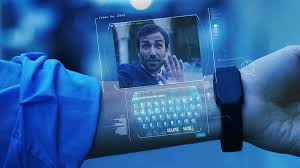
The smartphone has become central to daily life, but emerging technologies hint at a future where our devices might literally float in the air. Holograms—three-dimensional projections that can interact with users—are being explored as the next evolution of personal computing and communication.
1. What Are Holograms?
Holograms are light-based 3D images that appear to exist in space. Unlike traditional screens, they can be:
- Viewed from multiple angles, giving a realistic sense of depth.
- Interacted with using gestures or voice commands instead of touchscreens.
- Projected without physical hardware like a phone screen.
In essence, holograms could act as virtual interfaces, replacing some functions of smartphones entirely.
2. How Holograms Could Function as Phones
- Communication: 3D video calls could project life-size images of people in your room.
- Media consumption: Movies, games, and apps could float in 3D space.
- Productivity: Virtual keyboards, interactive dashboards, and holographic meetings.
- Augmented reality: Real-world overlays could integrate seamlessly with digital content.
By combining AI, motion sensors, and holographic displays, these systems could eliminate the need for physical screens.
3. Benefits of Holographic Devices
- Immersive experiences: More engaging than flat smartphone screens.
- Space-saving: No need for bulky hardware; holograms could project anywhere.
- Hands-free interaction: Gestures and voice replace constant tapping and swiping.
- Customizability: Holograms can scale, move, and change shape as needed.
4. Challenges to Overcome
- Technical complexity: High-resolution, stable holograms require advanced optics and computing power.
- Cost: Cutting-edge devices may be expensive for widespread use.
- Energy consumption: Maintaining projections and processing 3D content uses significant power.
- Privacy concerns: Projected data could be visible to anyone nearby.
- User adaptation: Learning new ways to interact with floating interfaces may take time.
5. The Future of Holographic Communication
- Hybrid devices: Phones could project holograms while still retaining physical capabilities.
- Wearable integration: Glasses or headsets could enhance holographic interaction.
- Social connectivity: Virtual gatherings could become more lifelike and interactive.
- Commercial and educational use: Holograms could replace screens in classrooms, offices, and stores.
While full smartphone replacement may still be decades away, holographic technology offers a glimpse of a futuristic, screenless world.
Final Thoughts
Holograms have the potential to redefine how we communicate, work, and entertain ourselves. By turning flat screens into interactive, floating projections, they could eventually transform the smartphone into a holographic hub for personal and professional life.